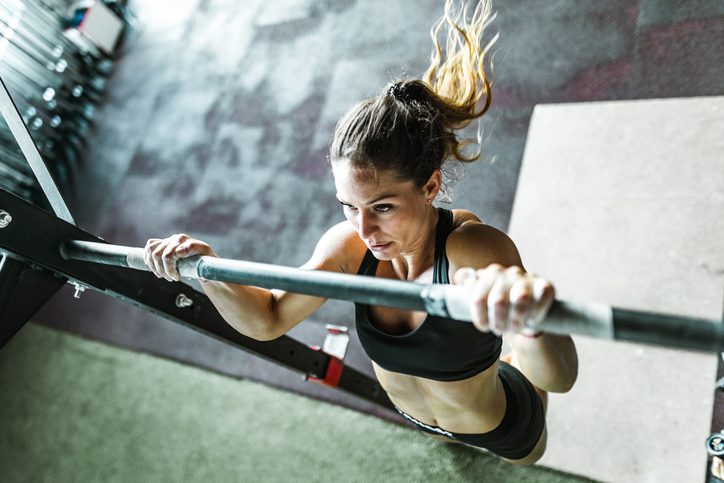Follow this in-season triathlon strength program to nail your A race this season
Use the gym to improve your strength and go faster

Traditionally, resistance training has had a bad rap among endurance athletes. It’s commonly thought that lifting weights will yield unwanted mass, a bodybuilder’s physique and slower race performances. However as of late, word is spreading that lifting weights can improve cycling and running performance by improving cycling and running economy, respectively, with little to no change in body mass. Incorporating resistance training into a busy triathlon training schedule can be tricky, but your investment can be the best addition you can make to your yearly training plan.
Since triathlons are composed of endurance events, it’s common to think that triathletes should work on their endurance when resistance training, but the opposite is actually true. Think about it like this. You spend hours each week working on filling your endurance bucket. All the swims, bikes and runs focus on improving your endurance for each respective sport, however, no time is spent filling your strength bucket. This is where resistance training comes in. So, instead of focusing on training endurance in the gym, focus on improving your strength.

Related: Study – when should you stop strength training ahead of your goal race
The strength training program should be adjusted on a weekly and monthly basis throughout the year, just like the endurance training program for the swim, bike and run. During the base building months, two to three strength training sessions should be performed each week until the competitive season. In the early competitive season, gym sessions should drop to two per week and down to one per week during the racing season. When base building, introduce exercises with a 2 to 3 set x 10 to 15 rep scheme. This will ease your body into the gym and prepare your body for the heavy lifting later in the season. Focus mainly on free-weight exercises that target your larger muscle groups such as your quadriceps, hamstrings, gluteals, calves and latissimus dorsi. The smaller muscle groups should also be trained to minimize the chance of developing muscle imbalances such as the gluteus medius, tibialis posterior, serratus anterior, lower trapezius, rotator cuff and abdominals. Shoulder, thoracic spine, hip and ankle mobility should also be achieved and maintained to allow for ideal biomechanics when swimming, biking and running. As you approach the competitive season, keep the sets and reps the same for the smaller muscle groups, but shift to heavy resistance training for the major muscle groups. Three to five sets of 5 repetitions per set would be ideal. Ascending weights over 5 sets with 2 to 3-minutes between sets is recommended. Referring to our squat example above, you could structure it like this:
Set 1 – 55 pounds, 5 reps, 60 sec rest
Set 2 – 65 pounds, 5 reps, 90 sec rest
Set 3 – 75 pounds, 5 reps, 2 min rest
Set 4 – 85 pounds, 5 reps, 2 min rest
Set 5 – 90 pounds, 5 reps

Putting it all together in a sample workout could look like this (keep in mind each workout will look different depending on the needs of the triathlete):
Strength Session – In Season
Warm-up
5-10 min jog
Dynamic Mobility
Ankle Mobility
Knee over toes Wall Drill – As much as needed
Shoulder Mobility
Chest Corner Stretch – As much as needed
Hip Mobility
Kneeling Quadriceps Stretch – As much as needed
Small Support Muscles
Glute Medius
X-Band Walk – 3×15/side
Rotator Cuff
Band Shoulder External Rotation – 3×15
Lower Trapezius
Y-Raise – 3×15
Thoracic Spine Mobility
Wall Shoulder Circle Drill – As much as needed
Core stability
Dead Bug Ball Squeeze – 3x(6×10-sec hold)
Large Muscle Groups
Quadriceps, Gluteals, Hamstrings
Deadlift 5×5
Latissimus Dorsi
Chin Up or Pull Down 4×5
Quadriceps, Gluteals
Rear Foot Elevated Split Squat 4×5/leg
Calves
Single Leg Calf Raise 3×10-12/leg
Cool Down
5-10 min spin
Jon-Erik Kawamoto, MSc, CK, CSCS is a regular contributor to TMC and has been a Certified Kinesiologist and Strength and Conditioning Specialist for over 15 years. He co-owns a fitness training, nutrition and run coaching gym in St. John’s called JKConditioning (www.JKConditioning.com).
